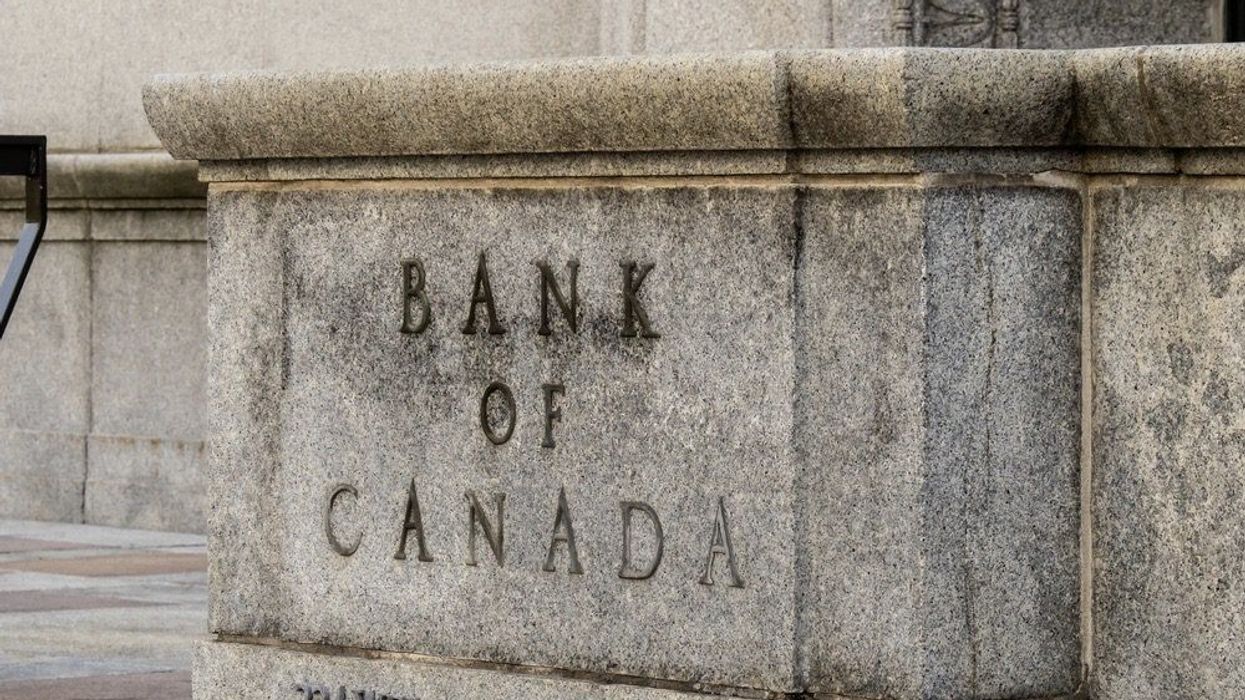The final rate announcement of the year is fast approaching, and one thing is certain -- the Bank of Canada will top 2022 off with another rate hike. Not much of a stocking stuffer!
Next Wednesday’s announcement will mark the seventh consecutive increase to the central bank’s cost of borrowing, which has risen from a pandemic low of 0.25% in March to 3.75% today. Analysts are calling for a hike of either 25 or 50 basis points, which will bring the Overnight Lending Rate to 4% or higher.
Either scenario caps what has been a year of rate pain for consumers, compounded by soaring inflation and growing recession fears. It’s not looking likely that borrowing costs will drop again in the new year -- but they will stabilize, as the Bank comes ever closer to what economists believe is its terminal rate.
“We have one more 25-beeper in the first meeting of the new year, so we have them going from 3.75% now to 4.5% and then we think they’ll hold at 4.5% after that first meeting,” said Doug Porter, Chief Economist and Managing Director of BMO Financial Group in a previous interview to STOREYS, adding that that the bank’s official call for December is 50 basis points.
New Data Points to Slower New Year
While Canada’s economic future is about as clear as a shaken-up snowglobe, there’s been a slew of data sets as of late that can provide some forward-looking clarity.
Perhaps the most telling clues come from south of the border, as the US Federal Reserve has indicated “it would soon be appropriate” to slow their own rate hiking pace, shifting from a series of 75-basis-point increases to a half-point hike this month.
The minutes released from the Fed’s November announcement read, “A substantial majority of participants judged that a slowing in the pace of increase would likely soon be appropriate,” though officials also conceded that “the ultimate level of the federal funds rate that would be necessary to achieve the committee’s goals was somewhat higher than they had previously expected.”
Given the two central banks must work closely in tandem on their monetary policy, that the Fed is chilling their approach offers the BoC breathing room to do the same -- but nothing is set in stone.
READ: Just How Much Does the US Fed Influence the Bank of Canada?
“Short of some wild inflation report before the next meeting, 50 bps sounds very reasonable in December. But the Fed is clearly not finished yet,” wrote Jennifer Lee, Senior Economist and Managing Director, Economics, BMO Economics, in a recent research note. “To quote other officials around the globe, the decision will be data-dependent and be made on a meeting-by-meeting basis. That sounds reasonable too.”
As well, a recent Bloomberg survey found a majority of economists think the Bank of Canada can leave their rate as much as a percentage below what the Fed does; more than half of 16 respondents said that while the BoC won’t explicitly signal a rate hold, it’s expected to stop hiking this month or in January, leaving borrowing costs at 4.25%.
Stronger than expected labour data and GDP growth could also support the Bank’s rationale for leaving rates higher, longer.
The Impact on Mortgage Borrowers
Regardless of what happens in the next two announcements, those carrying variable-rate mortgages will need to batten down the hatches, as their rate follows that of the central bank.
“The impact will be felt first by Canadians with variable-rate mortgages that do not have fixed payments and those who carry a balance on a home equity line of credit (HELOC). This group will have their payments adjust immediately to reflect the full impact of the rate hike,” said James Laird, Co-CEO of Ratehub.ca and President of CanWise mortgage lender.
“The upcoming rate hike will mean even more Canadians will reach their trigger rate and trigger point. This only applies to those with a variable-rate mortgage with fixed payments. Borrowers with this type of mortgage have not been forced to increase their payments to the full extent of the rate hikes this year. Anyone with a variable-rate mortgage that has a variable payment has been forced to absorb the full impact of this year’s rate hikes.”
According to his calculations, a 25-bps hike will translate to borrowers paying $84 more monthly (at a total of $1,008 more per year), while 50 bps will push payments up by $170 monthly, and $2,040 per year.
Just in time for the holidays.





















